Installing the Virtuoso Universal Server on Windows
- 0 - Prepare to Install
- 1 - Download the Virtuoso Installer Program
- 2 - Obtain a License File
- 3 - Run the Virtuoso Installer
- 4 - Start the Virtuoso Service Manager, and Locate it in the Task Bar
- 5 - Start and Administer your Virtuoso Instance
- 6 - Optional - Restore your old Data and Configuration Files
- See Also
0 - Prepare to Install
If you are upgrading an existing Virtuoso installation and want to preserve your existing data and configuration files:
- Shut down your Virtuoso instance as normal.
- Right-click on the existing Virtuoso.app (exact name may vary), and select Show Package Contents.
- Drill down to Contents --> virtuoso --> database.
- Check the size of the
virtuoso.trxfile, found in the database folder alongside thevirtuoso.dbandvirtuoso.inifiles.
- If zero bytes, proceed to step 6.
- If larger than zero bytes, start the instance from the command line with the extra argument, "
+checkpoint-only", and recheck.trxfile size -- expecting zero bytes.
- If larger
.trxfiles persist, contact Technical Support.
- If zero bytes, proceed to step 6.
- Make a backup of your existing Virtuoso Database and Configuration files (defaults are
virtuoso.dbandvirtuoso.ini) prior to performing the steps that follow. Note: Virtuoso's online backup feature, if enabled, should have already generated a backup-set.
- Use the Add/Remove Programs utility to uninstall any previously installed Virtuoso components. Data and configuration files will be left behind by this process.
1 - Download the Virtuoso Installer Program
- Download the Virtuoso 7.2 installer archive (wavpz2zz.msi) from the download site.
Note: Virtuoso 7.x is 64-bit only, and requires Vista or Windows Server 2003, or later.
2 - Obtain a License File
- If you haven't already obtained a suitable Virtuoso 7.x license file, return to the download site, and click the link for Free Eval License (15 day duration, requires only your email address) or Free Pilot License (30 day duration, requires some additional personal and business information).
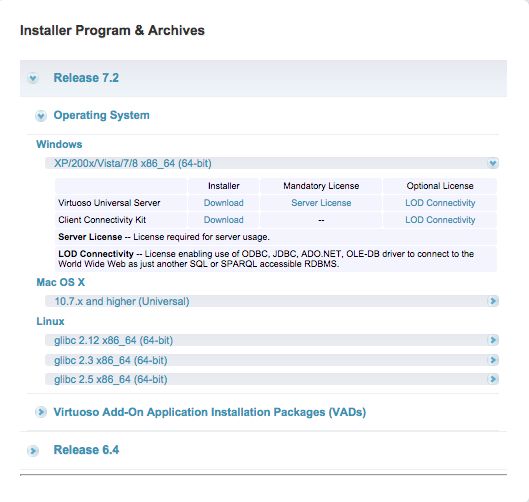
- Fill out the relevant form, and download the license file when presented.
Note -- the file must be named
virtuoso.licfor use. Some browsers may rename the file during download; you can simply rename the file on your machine.
3 - Run the Virtuoso Installer
- Double-click the installer archive,
wavpz2zz.msi, to start the process with the Installer Program Introduction.
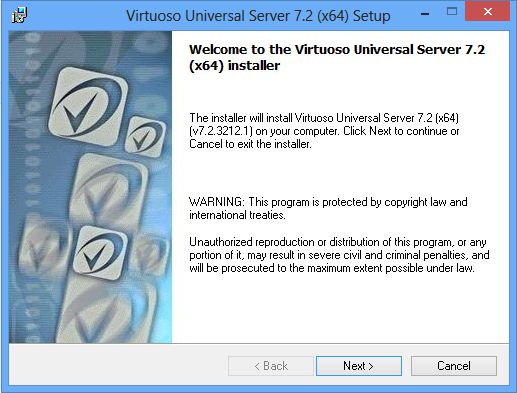
- Click Next, and you'll be presented with the License Agreement:
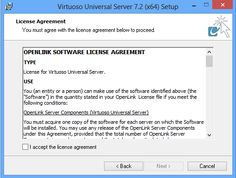
- Tick the box for I accept, and click Next.
You'll be asked to locate your license file:

- Use the Browse button to locate the license file you obtained earlier, or click the Try and Buy button to obtain a new one now, or tick the box for I don't want to install a license file now. Then, click Next.
You'll be prompted to select an Installation Type:

- Select the desired option
- Typical -- installs to the default filesystem location, may not include all components
- Complete -- installs to the default filesystem location, includes all components
- Custom -- to install to any filesystem location, and select which components will be installed
- Typical -- installs to the default filesystem location, may not include all components
- Click Next, and if you chose Typical or Complete, skip this and the next step; if you chose Custom, you'll be prompted to choose a destination folder:
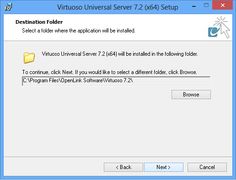
- Click Next, and if you chose Custom, you'll be prompted for Feature Selection:
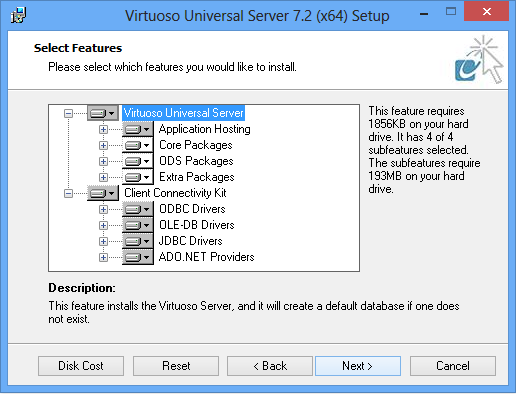
- Click Next, and the installer will indicate it's ready to begin:
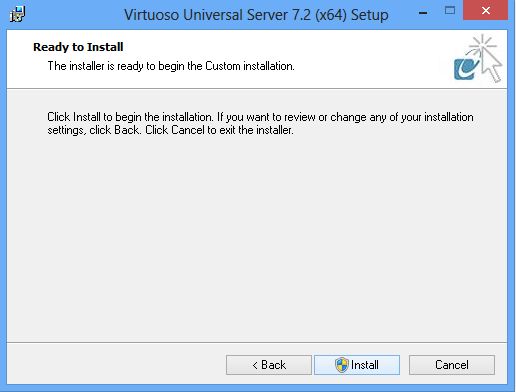
- Click install, and wait for notification of completion.
4 - Start the Virtuoso Service Manager, and Locate it in the Task Bar
- Launch the Virtuoso Service Manager from your Start menu.
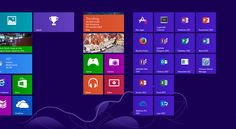
- Look for an icon to appear in the Task Bar at the bottom right of your screen.
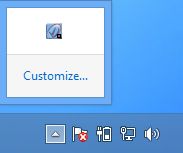
5 - Start and Administer your Virtuoso Instance
- Right-click on the Virtuoso Service Manager icon in the Task Bar, and click on
OpenLink Virtuoso Server - Start.
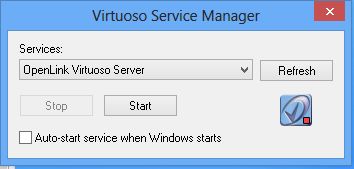
- Open the Virtuoso Conductor, Virtuoso's HTTP-based administration tool, by loading this URL in your Web Browser:
http://localhost:8890/conductor.
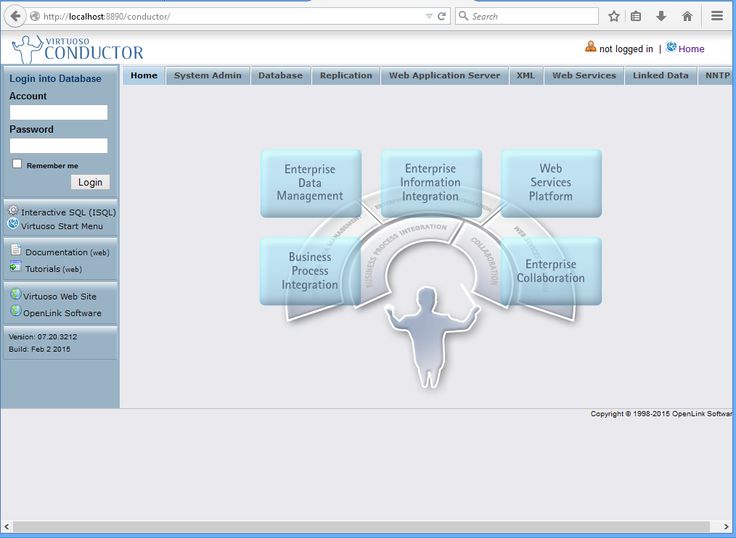
- Use the Conductor to configure your Virtuoso instance for future use.
For example, it is strongly advised that you change the default passwords for the
dbaanddavsuper-user accounts (drill down to System Admin --> User Accounts).
6 - Optional - Restore your old Data and Configuration Files
If you preserved existing data and configuration files at the start of this process, now is the time to bring them back into play.
- If you used Virtuoso's online backup feature, the documentation will walk you through the restoration process.
- If you simply copied the INI and DB files elsewhere, and if they were Virtuoso 7.x files, you can just stop the current Virtuoso instance, and replace the newly created INI and DB with the old ones.
For best results, we do advise that you compare the content of the old INI with the new, and add any new settings from the new to the old, adjust as may be appropriate to your deployment.
- If you simply copied the INI and DB files elsewhere, and if they were Virtuoso 6.x or older files, there are some extra steps that must be taken.